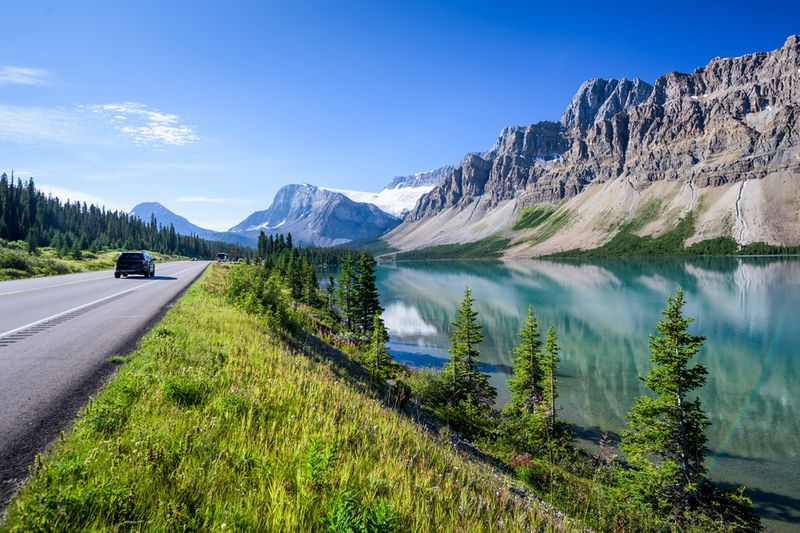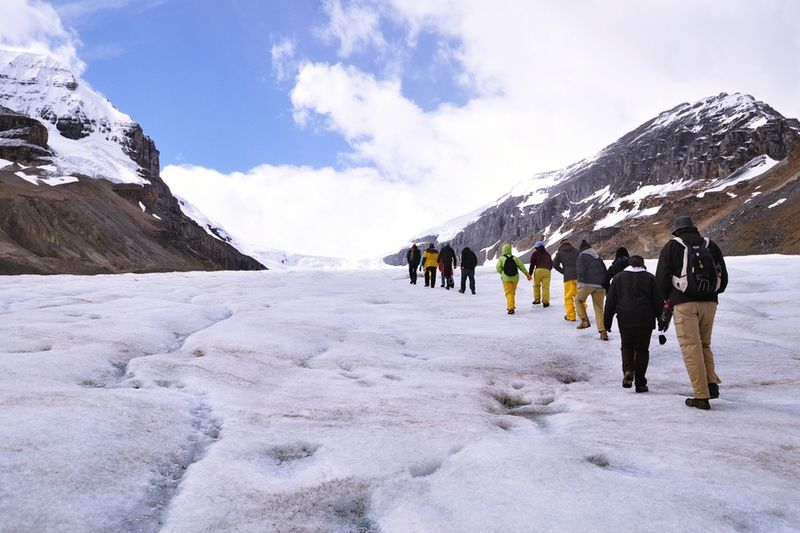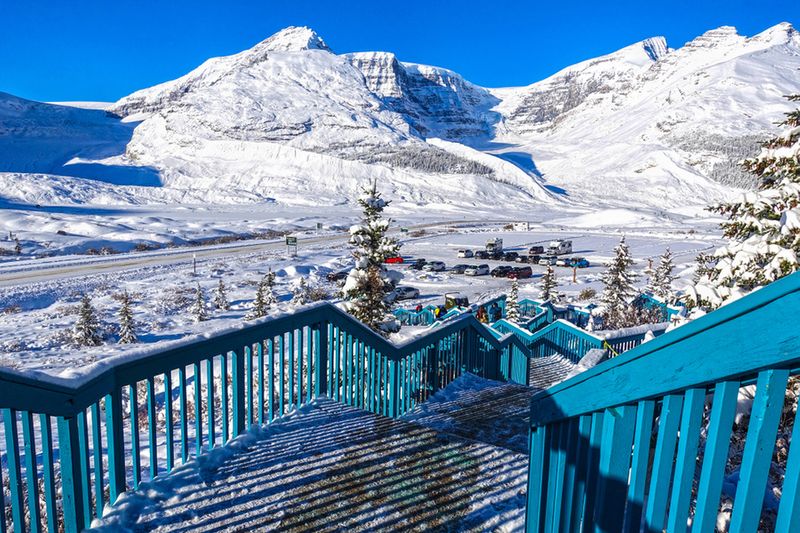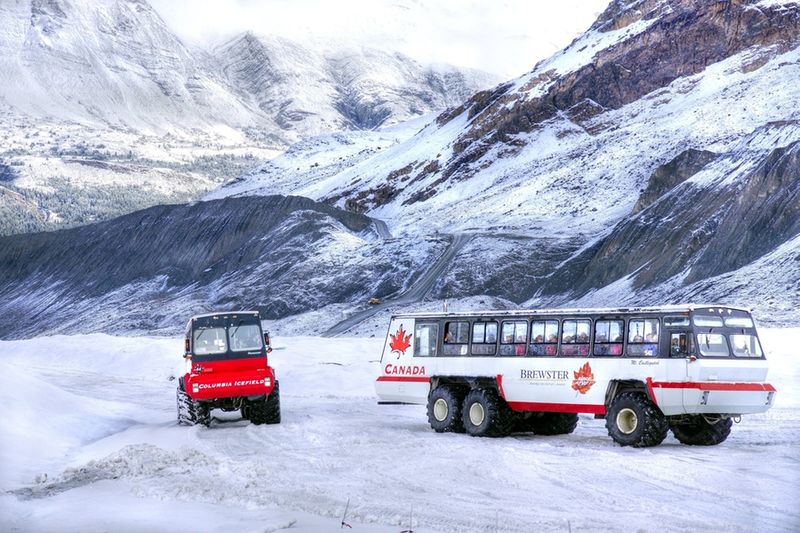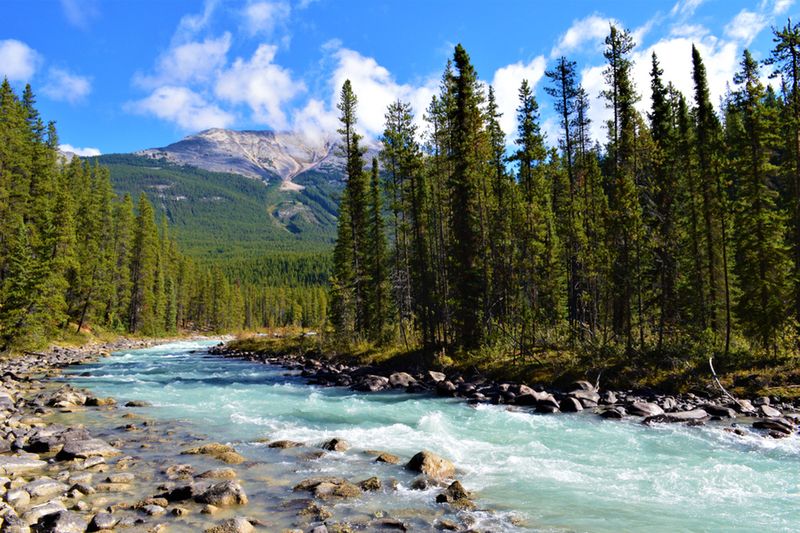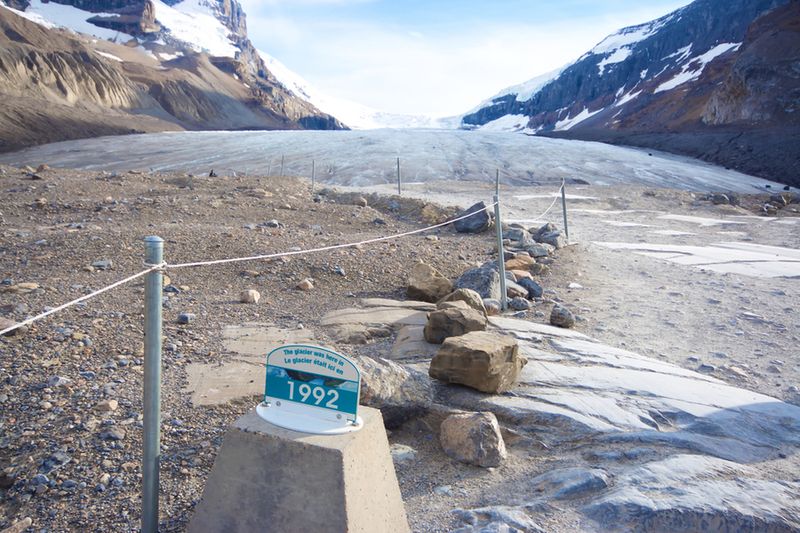Get to know one of the world’s most visited glaciers
Deep in the Canadian Rockies, the Athabasca Glacier is one of the region’s most loved sights. This icy attraction draws people from across the country, thanks in part to its proximity to the Icefields Parkway – making it easily accessible. Visit between May and early October and you can step onto the glacier itself. Tours introduce people to the glacier’s history, key features and the nearby ecosystems that rely on its existence. If you’re a keen hiker, you can embark on a 5–8.5km trek with a professional guide, enjoying incredible views of the surrounding rockies and an intimate look at the glacial landscape along the way.
Here, 7 things to know about the Athabasca Glacier.
1. Athabasca is one of the world’s most accessible glaciers, and among North America’s most visited
While many great glaciers are tucked into remote mountain ranges or accessible only by long trek, Athabasca is one of the easiest to reach, located just off the Icefields Parkway. This winding stretch of road running from Lake Louise to Jasper is widely reputed as one of the most scenic highways in the world, and was named by National Geographic as one of their Drives of a Lifetime. If you’ve chosen to hire a car and explore the region independently, there’s a public parking area at the foot of the glacier, where guided tours depart.
2. It’s part of the Columbia Icefield
Athabasca Glacier is well known across Canada and beyond, but few realise it’s one of six major glaciers fed by the Columbia Icefield – the largest icefield in the Rocky Mountains. The other glaciers – Castleguard, Columbia, Dome, Saskatchewan, and Stutfield – also flow from the icefield; Saskatchewan is the largest, but none are as accessible as Athabasca.
The sprawling Columbia Icefield straddles the Alberta-British Columbia border, covering approximately 230 sq km with snow and dense ice. It’s believed to have started forming over 200,000 years ago and has continued to evolve with the changing climate.
3. The average snowfall is seven metres per year
The sheer size and altitude of the Columbia Icefield means that the weather is constantly changing. In fact, scientists believe that it can create its own weather systems. Each year, the Athabasca Glacier is thought to receive seven metres of snow, but much of it falls in the winter months, outside of the peak tourist season. Visitors can walk on the glacier between May and early October, but prepare for cooler temperatures on the ice.
4. The nearby Glacier Skywalk is an architectural marvel
Opening in May 2014, the 400 metre long Glacier Skywalk was designed to showcase the majesty of the icy landscape, and encourage visitors to connect with their surroundings beyond simply driving the parkway. Thanks to this feat of engineering, visitors can walk the 1km marked path before stepping onto the glass-bottom walkway, which extends from the cliffside over the Sunwapta Valley. The self-anchored, horseshoe-shaped suspension sits 280 metres above the valley floor, so views below are spectacular.
Along the way, detailed signage takes visitors on a journey, sharing historical tidbits and pointing out notable sights.
5. The Terra Bus, which takes people to the glacier, is one of just 23 in the world
In order to traverse difficult terrain like the Columbia Icefield, specialised vehicles are required. Enter: the Terra Bus – a six-wheeled, off-road bus, built specifically to withstand freezing conditions. These heavy-duty buses are manufactured in Calgary, and can be found in just two places around the world – the Canadian Rockies, and the McMurdo Antarctic research station.
Terra Buses allocated to the Athabasca Glacier are fitted with large windows for visibility, making the journey onto the ice an exhilarating one.
6. The Columbia Icefield is nicknamed the Mother of Rivers
As its main accumulation straddles the Continental Divide, and forms what’s known as the ‘hydrographic apex of North America’ or the centre of water distribution on the continent, the Columbia Icefield is commonly nicknamed the Mother of Rivers. The meltwaters from the icefield’s various glaciers travel thousands of kilometres, flowing through many rivers and eventually draining into the Atlantic, Pacific and Arctic oceans.
7. In the past 125 years, the Athabasca Glacier has halved in volume
At its most recent advancement 175 years ago, the Athabasca Glacier once reached all the way to where the Icefield Centre stands today. But while advancement and retreat are normal for glaciers, NASA scientists believe that it has receded a staggering 1.5km in the last 125 years, and continues to do so at a current rate of approximately five metres per year. If you visit the site, you’ll see eerie markers denoting where the glacier once reached. While climate fluctuations affect glacial movement, it’s believed that global warming is having a profound impact on this and many other glaciers around the world.
For now, stepping foot onto the Athabasca Glacier is still a magical experience open to all. But this natural gem can’t be taken for granted.
